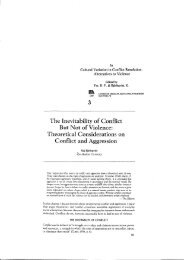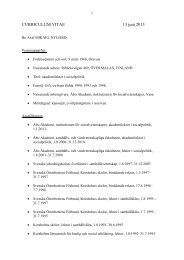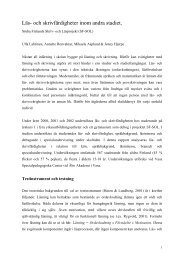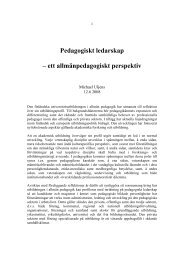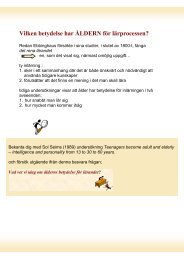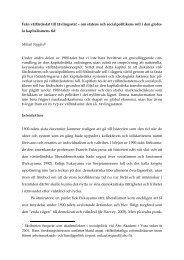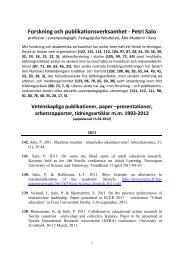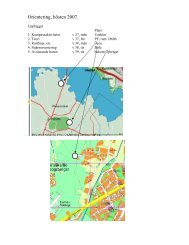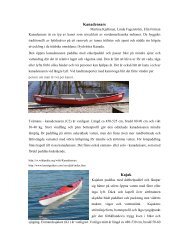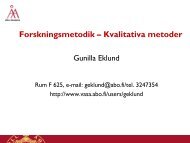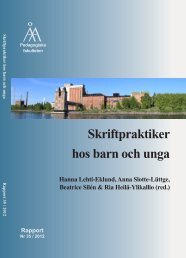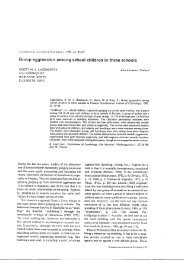Parties, Candidates and Citizens On-Line - Åbo Akademi
Parties, Candidates and Citizens On-Line - Åbo Akademi
Parties, Candidates and Citizens On-Line - Åbo Akademi
Create successful ePaper yourself
Turn your PDF publications into a flip-book with our unique Google optimized e-Paper software.
a website. The officials of the three major parties were, however, slightly less enthusiastic<br />
than the officials from smaller parties. Thirdly, both on average <strong>and</strong> for all individual<br />
parties, the Finnish parties preferred to use the website for information dissemination<br />
above engaging the users. Engagement was not, however, regarded as unimportant as<br />
several parties scored highly on both the informative- <strong>and</strong> engaging communication<br />
index.<br />
Turning to the second descriptive research question – what do the Finnish parties’<br />
websites look like as to the actual content of the site? – the content analysis revealed some<br />
noteworthy findings. Firstly, the Finnish parties generally use their websites for different<br />
types of top-down information. The parties mostly used their sites for internal<br />
administration <strong>and</strong> information. Additionally, website features related to general<br />
information <strong>and</strong> campaigning were quite common on the websites. The websites of the<br />
Christian Democrats <strong>and</strong> the Green League were the only sites scoring near the maximum<br />
on the participation <strong>and</strong> bottom-up communication index. Secondly, concerning website<br />
presentation <strong>and</strong> sophistication, the findings revealed a significant gap between the major<br />
<strong>and</strong> fringe parties. In fact, the three major parties were the ones scoring the highest on the<br />
index.<br />
Discussion<br />
The ambition of this study was explicitly explorative; the plausibility of the actorconstructivist<br />
view on party use of websites (Römmele 2003) would be further explored.<br />
In order to carry out this task, a theoretical backdrop consisting of four circumstances:<br />
party goals, party organization, party size <strong>and</strong> party voters, was developed. Thereafter, the<br />
findings regarding the Finnish parties’ opinions concerning the importance <strong>and</strong> use of<br />
their websites, as well as the contents of their actual websites, were exploratively assessed<br />
in light of this theoretical backdrop. Pertaining to this theoretical framework <strong>and</strong> the<br />
explorative ambition, what conclusions can be drawn from this study?<br />
<strong>On</strong>e crucial conclusion from this study is that the view which I have called “actorconstructivist”<br />
in this article is very difficult to study empirically. Concepts such as party<br />
goals <strong>and</strong> organization, for instance, are hard to operationalize in a readily measurable<br />
manner. Consequently, most of the analyses <strong>and</strong> conclusions to be drawn are explicitly<br />
explorative <strong>and</strong> tentative in nature; i.e. they give some indicative results <strong>and</strong> direction for<br />
future research but can not be regarded as providing any decisive answers. Regarding the<br />
first explorative research question – are there any patterns in the parties’ opinions<br />
concerning the importance <strong>and</strong> use of their website which are traceable to the parties’<br />
character in terms of party goals, organization size or composition of primary supporters?<br />
– the answer provided in this study is negative. The automatic clustering algorithm<br />
103



